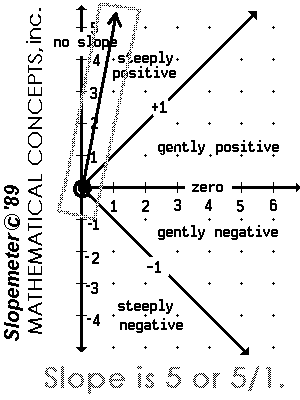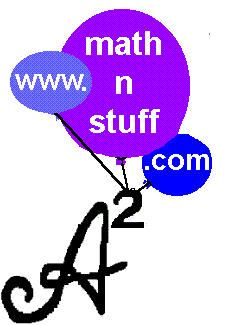![[Top]](http://www.mathnstuff.com/gif/top.gif)
16. object
|
© '98, Agnes Azzolino |
| object | model | manipulative/token |
![[Top]](http://www.mathnstuff.com/gif/top.gif)
The internet can not provide an example of concrete mathematics, the best it can do is provide a pictorial representation of the concrete. But, in mathematics some "things" are not even objects. Mathematics is often said to be abstract rather than concrete for just this reason, many mathematical "things" are not objects.
Communication is further hampered between those speaking the mother tongue and those speaking the purest form of formal mathematics because the meaning in one language is not the same as the meaning in the other language!
Consider the mathematical "things" called function and triangle.
![[Top]](http://www.mathnstuff.com/gif/top.gif)
In both the mother tongue and formal mathematics a model is a replica or a smaller version of a "thing" which has some or all of the properties of the "thing" it models. In formal mathematics, a model is often an equation used to describe a performance or situation, as in the above example of function, the equation was a more concrete representation of the function. In formal mathematics, as discussed above, the model might not even be a thing you can hold because you can't hold a function or equation.


The Slopemeter © is a slope gauge.
Placed on the graph of a function, it can be used to measure its slope. The arm of the Slopemeter is a ray with an end point at a point of tangency. It models slope in that slope is a measureable quantity and may be determined through the use of a tangent line or ray.
![[Top]](http://www.mathnstuff.com/gif/top.gif)
The concrete language of manipulatives and token really can't be demonstrated on a web page. The closest it can come is through animated gifs to pictorially present a representation of the tokens being placed to create the communication desired.
The reader is asked to take two detours. First jump to the Hundreds Board to explore the mathematical language of the manipulative or token to represent counting numbers and their addition before continuing on the representations below.
[Once there, you may jump back to this spot in the text to continue.]Then jump to the Graphing With Manipulatives to explore the mathematical language of the manipulative or token in representing functions before continuing on to the representations below.
[Once there, you may jump back to this spot in the text to continue.]
Below on the left, multiples of a number, the dilation of a constant by each of the natural numbers, is represented by placement on the 100s board.
Below on the right, all multiples of a number are represented by placing a line on the coordinate plane. To a nonuser of Graphing with Manipulatives, it looks like the pictorial language graph. To a user of Graphing with Manipulatives, it recalls how the manipulatives are used to communicate concretely.

References


Verbal, Written, Pictorial, and Concrete (the Hundreds Board, for example) are the four broad mathematics language families discussed in this electronic monograph found at www.mathnstuff.com/papers/langu/page0.htm and additional pages (ISBN: 1-929-870-01-9 © 1998, Agnes Azzolino).
![[MC,i. Home]](http://www.mathnstuff.com/math/spoken/here/1gif/mcihome.gif)
![[Table]](http://www.mathnstuff.com/math/spoken/here/1gif/table.gif)
![[Words]](http://www.mathnstuff.com/math/spoken/here/1gif/words.gif)

![[this semester's schedule w/links]](http://www.mathnstuff.com/gif/semestr.gif)
![[Good Stuff -- free & valuable resources]](http://www.mathnstuff.com/gif/goods.gif)
![[next]](http://www.mathnstuff.com/math/spoken/here/1gif/next.gif)
![[last]](http://www.mathnstuff.com/math/spoken/here/1gif/last.gif)
© 2005, Agnes Azzolino www.mathnstuff.com/math/spoken/here/papers/langu/page9.htm |